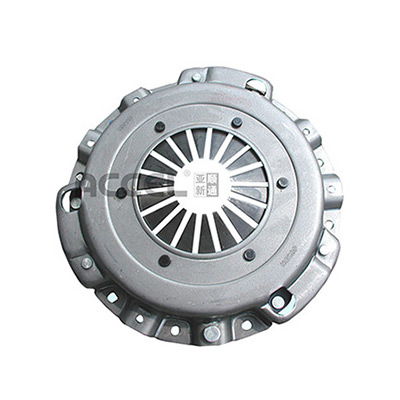- Arabic
- French
- Russian
- Spanish
- Portuguese
- Turkish
- Armenian
- English
- Albanian
- Amharic
- Azerbaijani
- Basque
- Belarusian
- Bengali
- Bosnian
- Bulgarian
- Catalan
- Cebuano
- Corsican
- Croatian
- Czech
- Danish
- Dutch
- Afrikaans
- Esperanto
- Estonian
- Finnish
- Frisian
- Galician
- Georgian
- German
- Greek
- Gujarati
- Haitian Creole
- hausa
- hawaiian
- Hebrew
- Hindi
- Miao
- Hungarian
- Icelandic
- igbo
- Indonesian
- irish
- Italian
- Japanese
- Javanese
- Kannada
- kazakh
- Khmer
- Rwandese
- Korean
- Kurdish
- Kyrgyz
- Lao
- Latin
- Latvian
- Lithuanian
- Luxembourgish
- Macedonian
- Malgashi
- Malay
- Malayalam
- Maltese
- Maori
- Marathi
- Mongolian
- Myanmar
- Nepali
- Norwegian
- Norwegian
- Occitan
- Pashto
- Persian
- Polish
- Punjabi
- Romanian
- Samoan
- Scottish Gaelic
- Serbian
- Sesotho
- Shona
- Sindhi
- Sinhala
- Slovak
- Slovenian
- Somali
- Sundanese
- Swahili
- Swedish
- Tagalog
- Tajik
- Tamil
- Tatar
- Telugu
- Thai
- Turkmen
- Ukrainian
- Urdu
- Uighur
- Uzbek
- Vietnamese
- Welsh
- Bantu
- Yiddish
- Yoruba
- Zulu
Jul . 29, 2024 16:54 Back to list
Explore the Benefits and Features of T10 20mm PU Timing Belts for Your Machinery Needs
Understanding the PU Timing Belt T10 Profile, 20 mm Width
The design and engineering of mechanical systems often rely on various types of belts to transmit motion and power effectively. Among these, the polyurethane (PU) timing belt stands out due to its durability, flexibility, and excellent performance in demanding environments. This article delves into a specific type of PU timing belt known as the T10, with a width of 20 mm, exploring its features, applications, and advantages.
What is a PU Timing Belt?
A timing belt is a looped band, typically made of rubber or polyurethane, that synchronizes the rotation of two or more shafts while preventing slippage. Unlike standard belts, timing belts have teeth that engage with pulleys, ensuring precise motion transfer. PU timing belts, in particular, are known for their resistance to wear and tear, oil, and temperature fluctuations, making them suitable for a variety of applications.
The T10 Profile
The T10 timing belt utilizes a specific tooth profile, known as the T profile, characterized by a trapezoidal shape. The T designates the profile type, while 10 indicates the height of the teeth in millimeters. T10 belts have a tooth height of 10 mm, which allows for robust engagement with the pulleys. This profile is designed for a balance of flexibility and load-bearing capacity, making it ideal for applications requiring precise movement over long distances.
Width Specifications 20 mm
The width of a timing belt can significantly affect its performance and application suitability. A 20 mm width offers a stable platform for power transmission, allowing for increased load capacity compared to narrower belts. This specification ensures that the belt can handle the demands of high-torque applications, making it a popular choice in various industries, including manufacturing, automation, and robotics.
Applications of the T10 20 mm PU Timing Belt
The T10 20 mm PU timing belt is widely used in several applications due to its exceptional performance characteristics. Here are some common areas where this timing belt excels
1. 3D Printing In 3D printers, precision movement is crucial for creating accurate models. The T10 timing belt ensures that the print head and platform move in perfect synchrony, resulting in high-quality prints.
pu timing belt t10 20 mm

2. CNC Machines Computer Numerical Control (CNC) machines require exact positioning and repeatability. The T10 timing belt provides the necessary precision for routing, milling, and other manufacturing processes.
3. Automated Assembly Lines In manufacturing settings where automation is key, the T10 timing belt facilitates the smooth movement of components along the assembly line, enhancing production efficiency.
4. Robotics In robotic applications, where agility and accuracy are paramount, the T10 20 mm PU timing belt plays a crucial role in enabling controlled movements, contributing to precise manipulations and operations.
Advantages of PU Timing Belts
The use of PU for timing belts brings several advantages
- Durability PU timing belts resist abrasion and can withstand harsh environmental conditions, making them ideal for heavy-duty applications.
- Flexibility The inherent flexibility of PU allows for tighter turns and more compact designs in machinery.
- Reduced Noise Compared to metal gearing systems, PU timing belts operate more quietly, contributing to a better working environment.
- Low Maintenance PU belts generally require less maintenance than their rubber counterparts, reducing downtime and operational costs.
Conclusion
In summary, the PU timing belt T10 with a 20 mm width represents a reliable, high-performance solution for a range of mechanical systems. Its robust design and excellent material properties make it a preferred choice in various industries, catering to the need for precision and durability. As technology continues to evolve, the importance of such components in automation and machinery will only increase, reaffirming the relevance of the T10 PU timing belt.
-
Upgrade Power Steering Pump Belt for Smooth, Quiet Operation
NewsAug.27,2025
-
Precision Timing Belt & Chain: Engine Performance & Durability
NewsAug.26,2025
-
Precision Lathe Drive Belts: Durable & Reliable Performance
NewsAug.25,2025
-
84.5 Serpentine Belt: Durable & Precision Fit for Your Engine
NewsAug.24,2025
-
Premium Ribbed Drive Belts for Quiet Power Transmission
NewsAug.23,2025
-
High-Performance Vehicle Timing Belt for Engine Precision
NewsAug.22,2025

